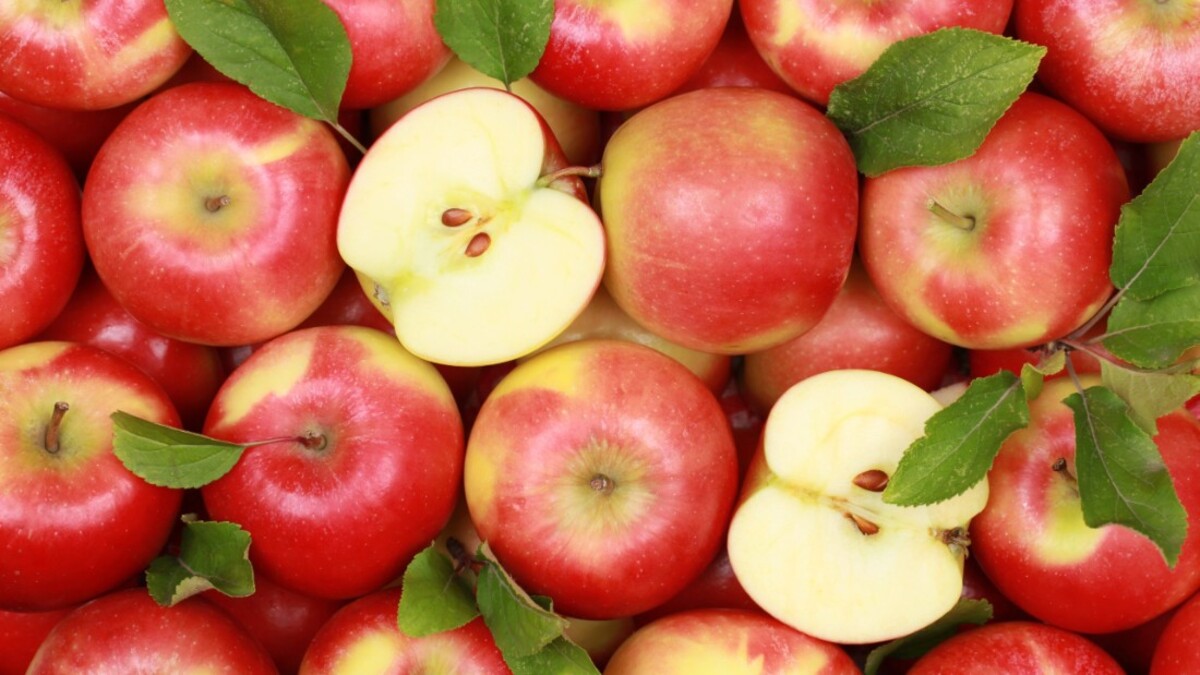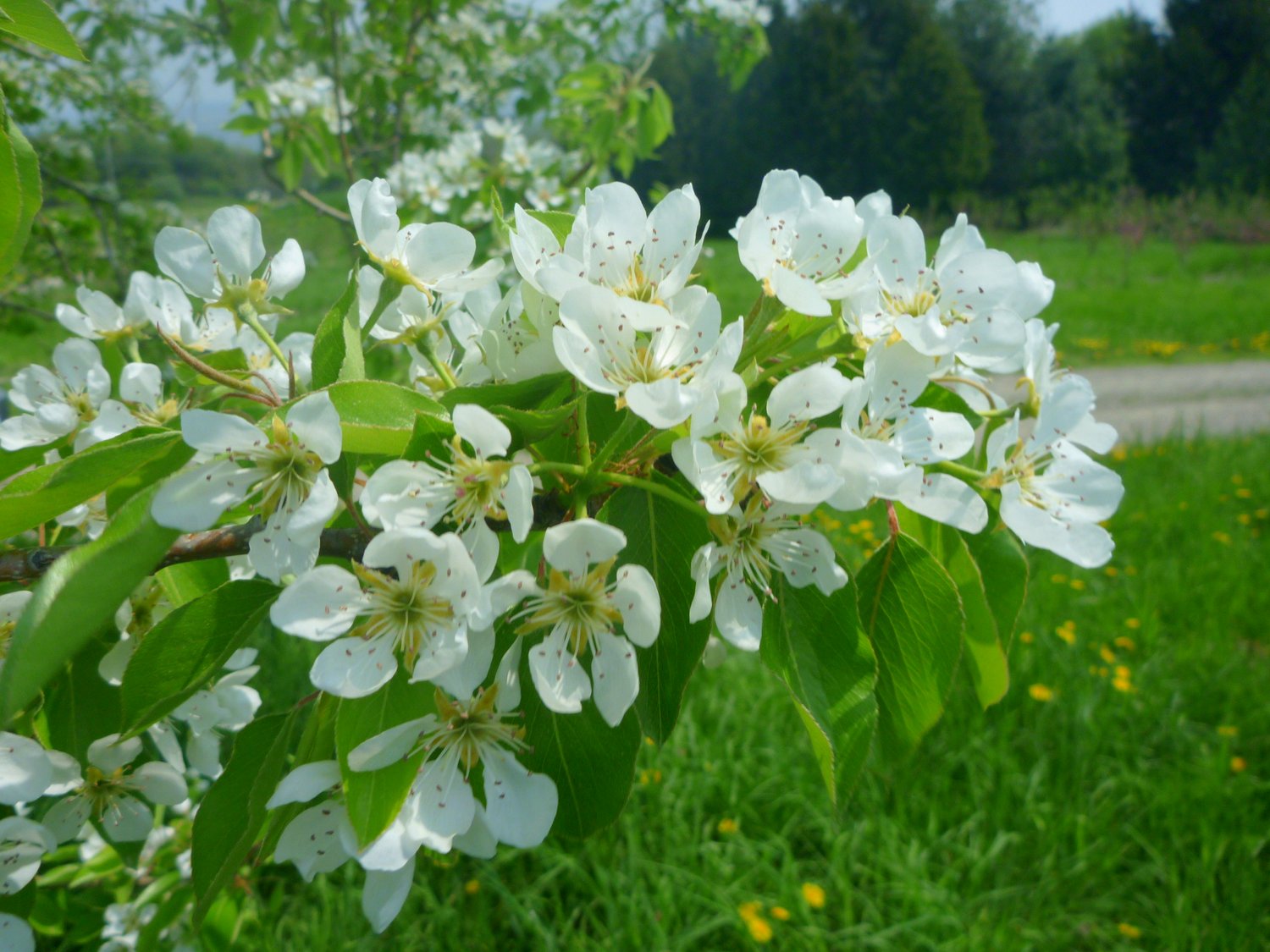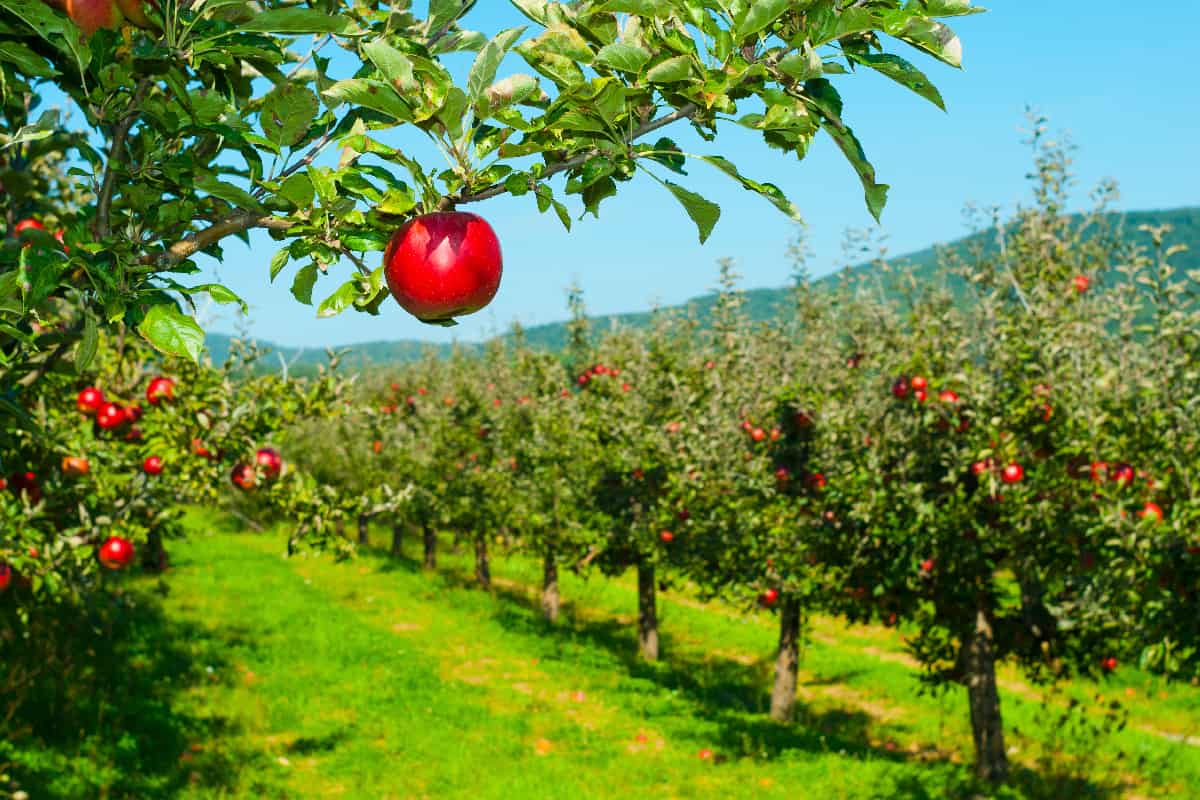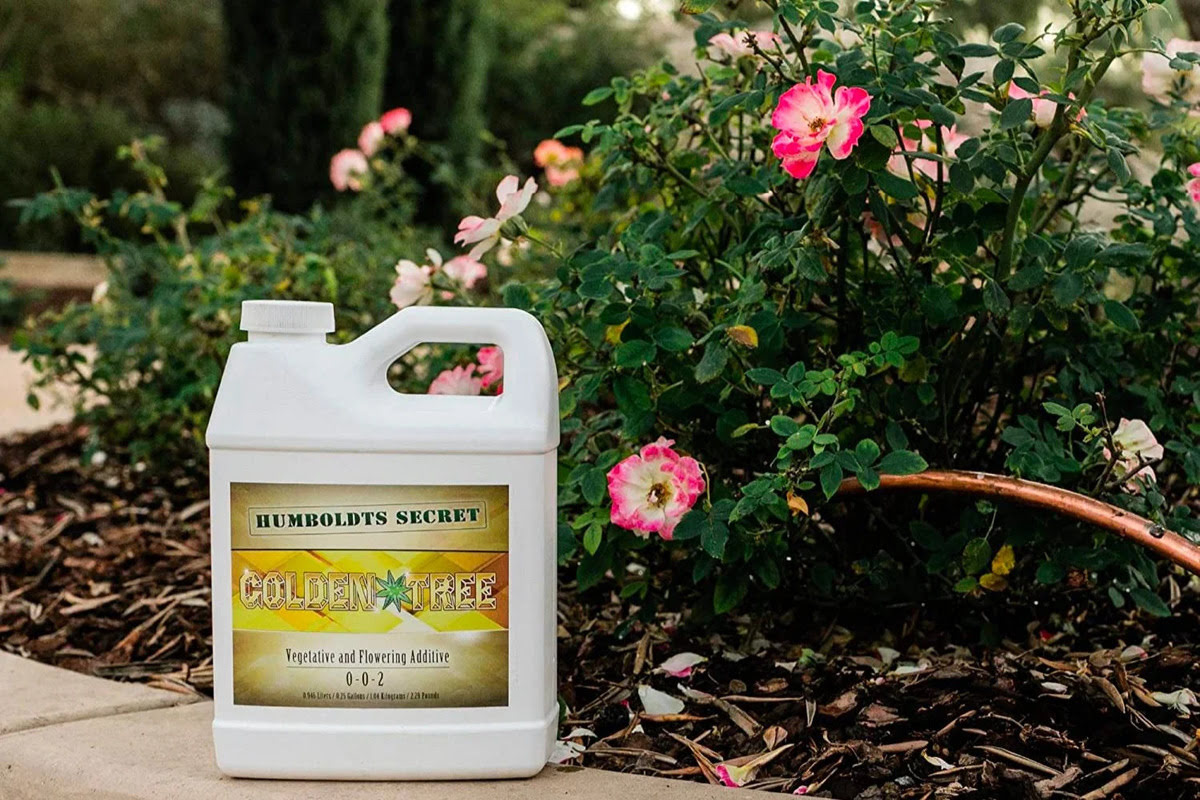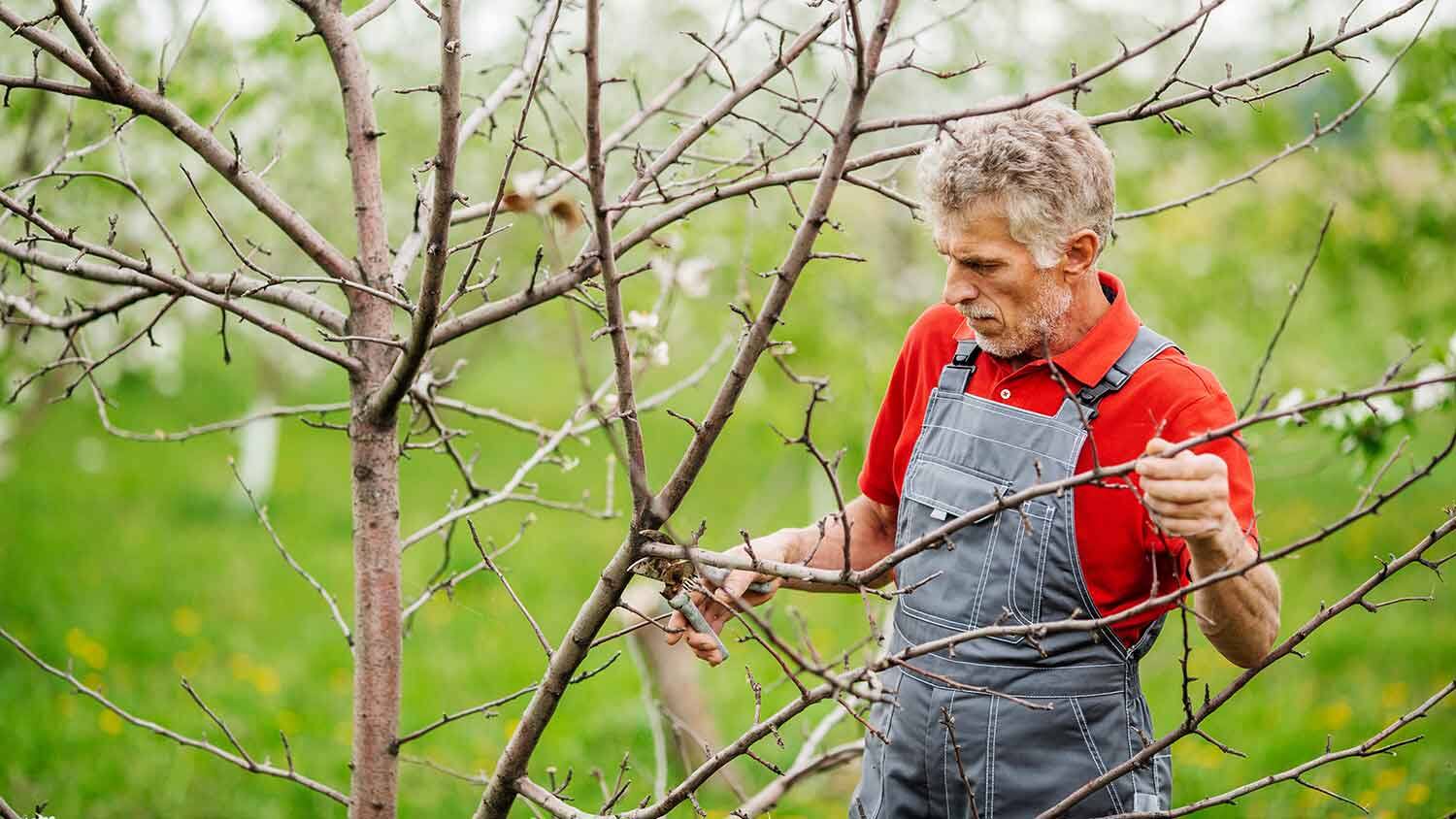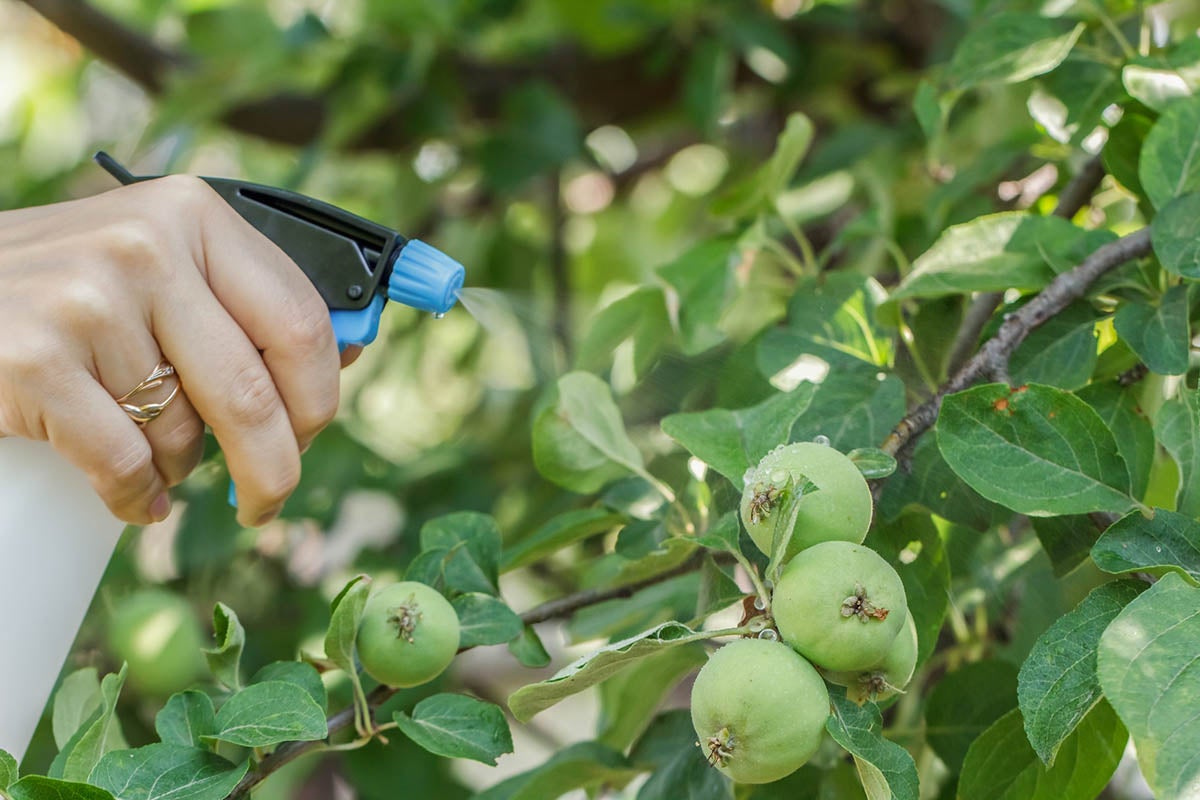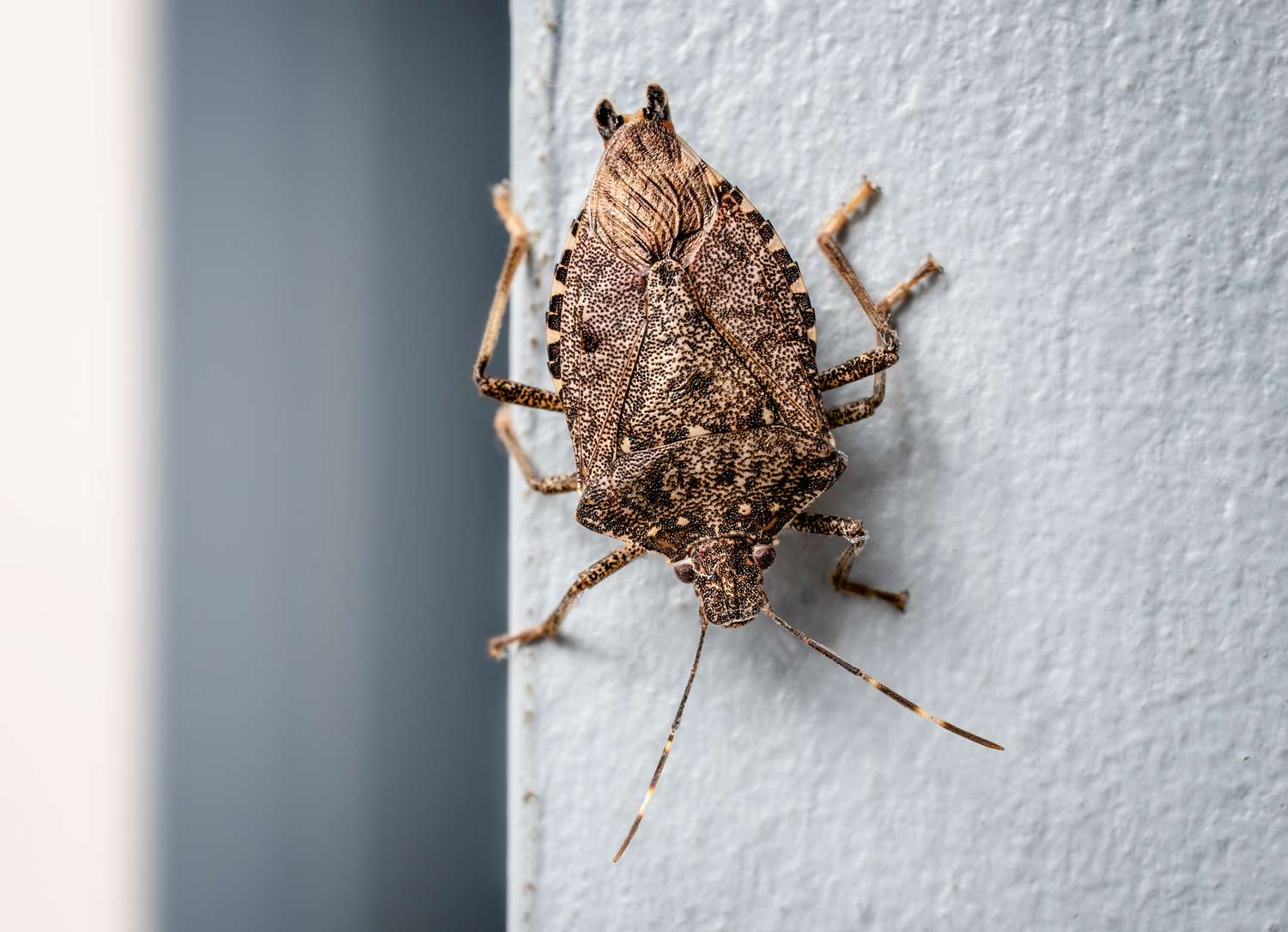Home>Gardening Techniques>Plant Care>How To Spray Apple Trees
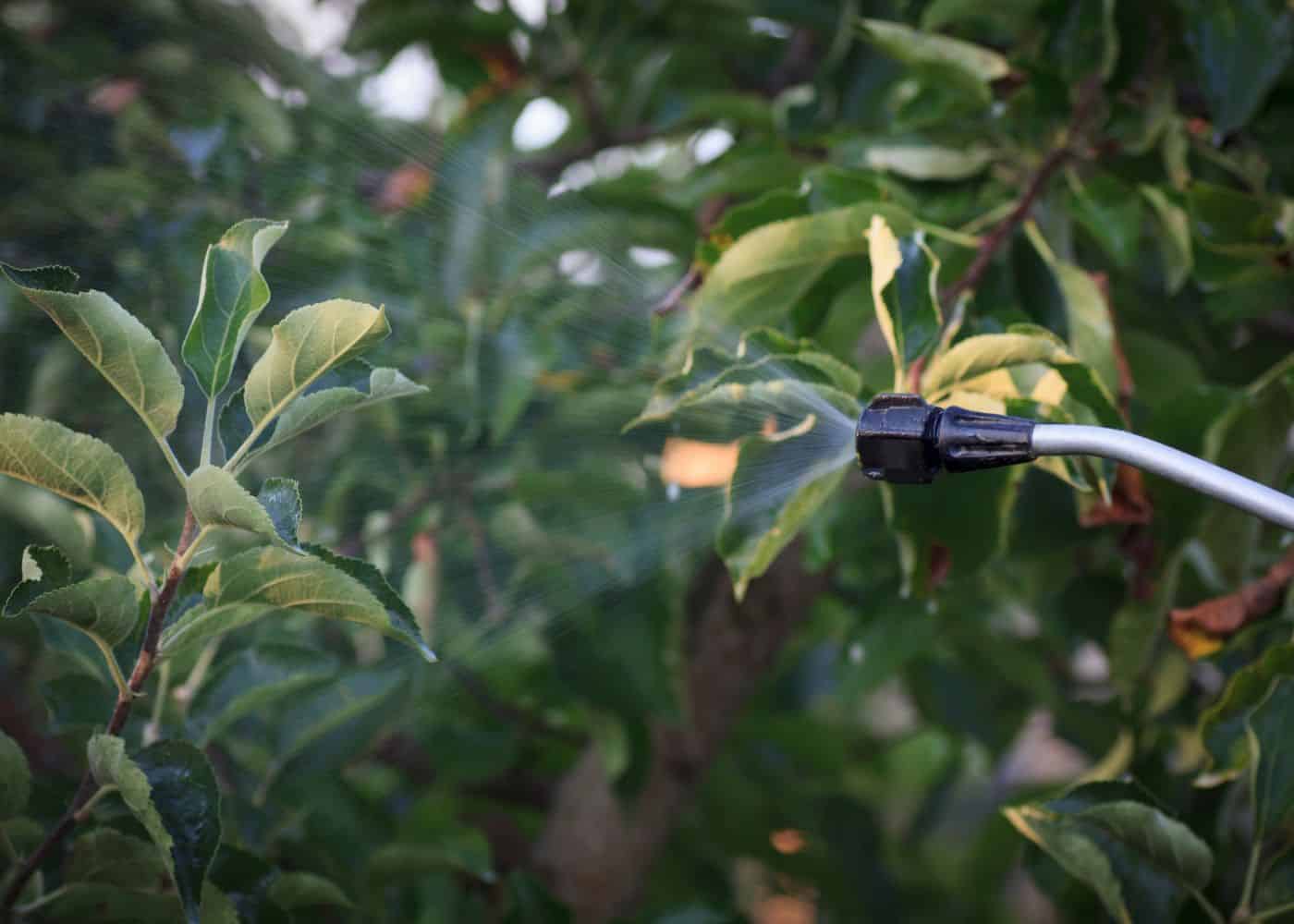

Plant Care
How To Spray Apple Trees
Modified: January 22, 2024
Learn the best plant care tips for spraying apple trees to ensure healthy growth and abundant harvest. Discover expert techniques and recommended products.
(Many of the links in this article redirect to a specific reviewed product. Your purchase of these products through affiliate links helps to generate commission for Chicagolandgardening.com, at no extra cost. Learn more)
Table of Contents
- Introduction
- Understanding the Importance of Spraying Apple Trees
- Choosing the Right Spraying Equipment
- Selecting the Best Time to Spray Apple Trees
- Preparing the Spray Solution
- Proper Techniques for Spraying Apple Trees
- Common Pests and Diseases in Apple Trees
- Identifying and Treating Pest Infestations
- Caring for Apple Trees After Spraying
- Conclusion
Introduction
Welcome to our comprehensive guide on how to spray apple trees. If you’re a proud apple tree owner, you know that proper care and maintenance are crucial for a healthy and fruitful harvest. One of the essential tasks in apple tree care is spraying. Regular spraying helps protect your trees from pests and diseases, ensuring optimal growth and fruit production.
In this article, we will take you through the step-by-step process of spraying apple trees and provide valuable tips for maximizing effectiveness. We’ll cover everything from choosing the right spraying equipment to identifying and treating common pests and diseases. By the end of this guide, you’ll have the knowledge and confidence to maintain your apple trees’ health and yield.
Spraying is an essential practice because it forms a barrier against harmful insects and pathogens that can damage your apple trees. It also plays a crucial role in preventing or managing common diseases that can affect trees, such as apple scab or powdery mildew.
When done correctly, spraying helps eliminate pests and diseases, enabling your apple trees to thrive and produce high-quality fruit. Additionally, by incorporating proper spraying techniques, you can reduce the need for chemical pesticides and promote environmentally friendly practices in your orchard.
So, whether you’re a beginner or an experienced gardener, let’s dive into the world of apple tree spraying and equip you with the knowledge and skills to care for your trees effectively.
Understanding the Importance of Spraying Apple Trees
Spraying apple trees is a crucial aspect of their care and maintenance. It serves multiple purposes and helps ensure the health and productivity of your trees. Understanding the importance of spraying is essential for every apple tree owner. Let’s explore some key reasons why spraying is vital:
Pest Control: Apple trees are susceptible to various pests, including aphids, codling moths, and apple maggots. These pests can cause significant damage to the leaves, trunk, and fruits of your tree. By regularly spraying your apple trees, you create a protective barrier that deters pests and reduces their population. This, in turn, minimizes the risk of infestations and helps maintain the overall health of your trees.
Disease Prevention: Apple trees are prone to diseases like apple scab, powdery mildew, and fire blight. These diseases can weaken the tree, stunt its growth, and reduce fruit quality. By spraying your trees with appropriate fungicides, you can prevent the spread of these diseases and keep your apple trees healthy and productive.
Fruit Quality and Yield: Regular spraying helps ensure high-quality fruit and a bountiful harvest. When your apple trees are free from pests and diseases, they can channel their energy into producing healthy, delicious fruits. Without proper spraying, your fruits may develop deformities, blemishes, or even become inedible. By maintaining a consistent spraying routine, you can enjoy visually appealing, flavorful apples.
Long-Term Tree Health: Apple trees are investments that require proper care to mature and thrive. Regular spraying protects the trees from harmful pathogens and pests, preventing long-term damage. By prioritizing the health of your apple trees, you increase their longevity and productivity, allowing them to provide you with years of delicious fruit.
Environmental Stewardship: Implementing an effective spraying routine can limit the necessity for harsh chemical pesticides. By using specific spraying techniques and opting for organic or eco-friendly solutions, you minimize the environmental impact of caring for your apple trees. This not only benefits your trees but also contributes to sustainable gardening practices.
Understanding the importance of spraying is the first step towards successful apple tree care. By recognizing the multiple benefits it provides, you can prioritize this essential task and give your trees the best chance to thrive.
Choosing the Right Spraying Equipment
When it comes to spraying apple trees, using the right equipment is crucial for achieving optimal results. The choice of spraying equipment depends on several factors, including the size of your orchard, your personal preference, and the specific needs of your apple trees. Let’s explore some key considerations for selecting the right spraying equipment:
Sprayer Type: There are various types of sprayers available, including handheld sprayers, backpack sprayers, and motorized sprayers. Handheld sprayers are suitable for small orchards or individual trees, while backpack sprayers are great for medium-sized orchards. Motorized sprayers are ideal for large-scale operations. Consider the size of your orchard and the level of convenience you require to determine the most suitable sprayer type.
Sprayer Capacity: The capacity of the sprayer is an important factor to consider. It determines how much solution you can spray before refilling. Larger orchards may benefit from sprayers with higher capacity, as they minimize the need for frequent refills. However, if you have a small orchard, a sprayer with a lower capacity may be more than sufficient.
Nozzle Selection: The choice of nozzle plays a significant role in determining spray pattern, coverage, and droplet size. Different pesticides and fungicides may require specific nozzle types for effective application. Adjustable nozzles allow you to vary the spray pattern, while fan-shaped nozzles provide better coverage. Consider the specific requirements of the sprays you will be using and choose the appropriate nozzle accordingly.
Quality and Durability: Investing in high-quality spraying equipment is essential for long-term use. Look for sprayers made from durable materials that can withstand constant use and exposure to chemicals. Check customer reviews and ratings to ensure you’re choosing a reliable and sturdy sprayer that will last for multiple seasons.
Ease of Use and Maintenance: Consider the ease of use and maintenance of the sprayer. Look for features such as comfortable straps, adjustable handles, and easy-to-clean components. Cleaning and maintaining your sprayer properly will ensure its longevity and efficiency. Additionally, consider if the sprayer requires any specialized maintenance tools or spare parts that may be difficult to source.
Safety Features: Spraying involves working with pesticides or fungicides, which can be harmful if not handled properly. Ensure that the sprayer you choose has appropriate safety features, such as pressure release valves, to prevent accidental spills or leaks. Always follow the manufacturer’s instructions and wear protective gear when using spraying equipment.
By carefully considering these factors, you can choose the right spraying equipment that meets your specific needs and ensures efficient and effective application of sprays to your apple trees.
Selecting the Best Time to Spray Apple Trees
Timing plays a critical role in the success of spraying apple trees. Choosing the right time to spray ensures that the treatments are most effective, maximizing their impact on pests and diseases. Factors such as the stage of tree growth, weather conditions, and the specific pests or diseases you’re targeting all influence the optimal timing for spraying. Let’s explore some key considerations when selecting the best time to spray apple trees:
Pre-bloom Sprays: Before your apple trees enter the bloom stage, it’s crucial to apply pre-bloom sprays to control certain pests and diseases. These sprays target overwintering pests and provide a barrier of protection as new growth emerges. The timing for pre-bloom sprays typically occurs in early spring when the buds start to swell but haven’t opened yet.
Bloom Sprays: During the bloom stage, it’s important to avoid spraying any products that may harm pollinators or affect the fertilization process. However, if you’re dealing with a specific pest or disease issue, consult with a professional or refer to the product labels for safe options that won’t harm the pollinators. In some cases, there may be specific recommendations for nighttime applications when pollinators are less active.
Post-bloom Sprays: After the bloom stage, post-bloom sprays are typically applied to address a variety of pests and diseases. These may include apple maggots, codling moths, and fungal infections. The timing for post-bloom sprays depends on the specific pests and diseases prevalent in your area and should be based on the recommendations provided by your local agricultural extension office.
Summer Sprays: During the summer months, it’s essential to continue monitoring your apple trees for any signs of pests or diseases. Summer sprays may be necessary to control common pests like aphids or diseases such as powdery mildew. Regular observation and early intervention can help prevent infestations from becoming more severe.
Fall Sprays: As the growing season comes to a close, fall sprays can help protect your apple trees from diseases and pests that could overwinter in the bark or soil around the tree. Applying dormant sprays in late fall, just before the trees go fully dormant, can help eliminate overwintering pests and reduce the risk of early-season infestations in the following year.
Weather Considerations: When planning your spraying schedule, be mindful of weather conditions. Avoid spraying during high winds, as this can result in poor coverage and drift. Opt for calm, dry days to ensure the spray solution remains on the tree’s foliage for an extended period, promoting effective contact with pests and diseases.
It’s important to note that specific timing may vary depending on your location and the specific apple tree varieties you’re growing. Local agricultural extension offices or horticulturists can provide valuable insights into the best timing for spraying in your area.
By carefully considering the stage of tree growth, weather conditions, and specific pests or diseases, you can select the optimum time to apply sprays to your apple trees, ensuring maximum effectiveness and protection.
Preparing the Spray Solution
Preparing the spray solution properly is essential to ensure effective control of pests and diseases and to minimize any potential harm to your apple trees. Here are some key steps to follow when preparing the spray solution:
Read and Follow Instructions: Begin by carefully reading and following the instructions provided on the pesticide or fungicide product label. Each product has specific guidelines regarding the mixing ratio, required safety precautions, and any specific recommendations for application.
Calculate the Correct Amount: Measure the required amount of the pesticide or fungicide to be added to the water based on the recommended dosage on the label. It’s important to avoid under-diluting or over-diluting the solution, as this can lead to ineffective control or potential damage to the apple trees.
Choose the Right Water Source: Use clean water when mixing your spray solution. Rainwater or well water is preferable over tap water, as it tends to have fewer impurities and is less likely to contain chlorine or other additives that may negatively affect the effectiveness of the spray solution.
Mixing Order: In general, fill your spray tank with water first, then add the correct amount of the pesticide or fungicide. This order helps ensure proper mixing and dispersion of the active ingredients throughout the solution. Stir or agitate the mixture gently to ensure thorough blending.
Safety Precautions: When handling chemicals, always wear appropriate personal protective equipment (PPE) such as gloves, goggles, and a mask. Follow all safety guidelines and precautions listed on the product label to protect yourself and minimize any risk of exposure.
Compatibility: Some pesticides or fungicides may require additional additives or surfactants to enhance their effectiveness. Check the product label or consult with a knowledgeable professional to determine if any additional additives are necessary and, if so, follow the recommended guidelines for their inclusion.
Timing of Application: Once the spray solution is prepared, it’s important to use it promptly for best results. Pesticides and fungicides can lose their effectiveness if left sitting for an extended period. Mix only the amount needed for immediate application to avoid waste and ensure the potency of the solution.
Disposal: Properly dispose of any leftover spray solution or rinsate in accordance with local regulations. Do not pour excess solution into drains or water bodies, as it can contaminate the environment. Follow the instructions on the product label for guidance on disposal methods.
By following these steps, you can prepare the spray solution effectively, ensuring proper ratios, dispersal, and adherence to safety guidelines. Consistent and accurate preparation of the spray solution plays a vital role in achieving optimal control of pests and diseases while safeguarding the health of your apple trees.
Proper Techniques for Spraying Apple Trees
Applying pesticides and fungicides to apple trees requires proper technique to ensure thorough coverage and effective control of pests and diseases. Here are some essential techniques to follow when spraying apple trees:
Timing: Choose a time when the weather is dry, calm, and not excessively hot to minimize evaporation and drift. Early morning or late afternoon is often the best time to spray, as the foliage is usually dry, reducing the risk of fungal diseases.
Uniform Coverage: Ensure that the spray solution is applied uniformly to all parts of the tree, including the branches, leaves, and fruit surfaces. Use appropriate spraying equipment and adjust the nozzle settings to achieve a fine mist or spray pattern that evenly coats the target areas.
Keep a Safe Distance: Maintain a safe distance between the sprayer and the tree to prevent excessive pressure or damage to the foliage. Spraying too closely may result in uneven coverage or damage to tender buds and leaves.
Appropriate Spray Angle: Hold the sprayer nozzle at an appropriate angle to achieve optimal coverage. A slightly downward angle is recommended when spraying the tops of the trees, while an upward angle can be used to target the undersides of leaves.
Overlapping Sprays: As you move around the tree, overlap each spray pass to ensure complete coverage. This helps prevent any gaps where pests or diseases could go untreated. Pay special attention to the canopy interior and areas that are easily missed, such as the center of the tree or dense foliage.
Consistent Speed and Movement: Maintain a consistent walking speed and smooth movement while spraying to avoid overapplying or underapplying the spray solution. Slow, deliberate motions ensure that each area receives an adequate amount of spray without excessive runoff.
Avoid Runoff: Avoid excessive runoff by applying the spray solution at a rate that the tree can absorb. Overly fast application can result in wasted solution and increased environmental impact without providing any additional benefit to the tree.
Follow Product Instructions: Read and follow the instructions provided on the pesticide or fungicide product label regarding the specific spraying techniques recommended for that particular product. This information may include spray volume, pressure, droplet size, and other guidelines for optimal application.
Post-Spray Equipment Cleaning: After spraying, thoroughly clean and rinse your spraying equipment to prevent cross-contamination between different products or the inadvertent spread of pests or diseases. Follow the manufacturer’s instructions for cleaning and maintenance of your spraying equipment.
By implementing these proper spraying techniques, you can maximize the effectiveness of the spray solution, minimize waste, and maintain the health and productivity of your apple trees. Remember to always prioritize safety and follow the guidelines provided by the product manufacturer for best results.
Common Pests and Diseases in Apple Trees
Apple trees, like any other plant, are susceptible to various pests and diseases that can disrupt their growth and impact the quality of the fruit. It’s crucial for apple tree owners to familiarize themselves with these common pests and diseases to effectively identify and address any issues that may arise. Here are some of the most prevalent pests and diseases in apple trees:
Apple Codling Moth: The codling moth is a common pest that lays its eggs on apple fruits. The larvae then tunnel into the fruit, causing damage and making it susceptible to secondary infections. Regular monitoring and timely insecticide treatments can help control codling moth populations.
Apple Maggot: Apple maggots are small, white larvae that burrow into the fruit, leaving tunnels and causing fruit drop. Yellow sticky traps and targeted insecticides can help manage apple maggot infestations.
Aphids: Aphids are tiny, sap-sucking insects that can cause curling leaves, stunted growth, and the transmission of viruses. Insecticidal soap or horticultural oil sprays are effective in controlling aphids.
Apple Scab: Apple scab is a fungal disease characterized by dark, scaly lesions on leaves, fruit, and twigs. To manage apple scab, practice good sanitation by removing fallen leaves and debris, and apply a fungicide in the early spring before bud break.
Fire Blight: Fire blight is a bacterial disease that affects apple trees, causing blackened, withered branches or shoots that resemble scorched areas. Pruning infected branches, proper sanitation, and antibiotic sprays during bloom can help manage fire blight.
Cedar Apple Rust: Cedar apple rust is a fungal disease that causes orange, rust-colored lesions on leaves and fruits. It requires both apple and cedar or juniper trees to complete its life cycle. Fungicides and removing nearby cedar or juniper trees can help control cedar apple rust.
Powdery Mildew: Powdery mildew appears as a white, powdery coating on leaves, shoots, and fruit. Good airflow, regular pruning, and the application of fungicides can help prevent and manage powdery mildew.
Apple Scab: Apple scab is a fungal disease characterized by dark, scaly lesions on leaves, fruit, and twigs. To manage apple scab, practice good sanitation by removing fallen leaves and debris, and apply a fungicide in the early spring before bud break.
Apple Maggot: Apple maggots are small, white larvae that burrow into the fruit, leaving tunnels and causing fruit drop. Yellow sticky traps and targeted insecticides can help manage apple maggot infestations.
Aphids: Aphids are tiny, sap-sucking insects that can cause curling leaves, stunted growth, and the transmission of viruses. Insecticidal soap or horticultural oil sprays are effective in controlling aphids.
Apple Scab: Apple scab is a fungal disease characterized by dark, scaly lesions on leaves, fruit, and twigs. To manage apple scab, practice good sanitation by removing fallen leaves and debris, and apply a fungicide in the early spring before bud break.
Fire Blight: Fire blight is a bacterial disease that affects apple trees, causing blackened, withered branches or shoots that resemble scorched areas. Pruning infected branches, proper sanitation, and antibiotic sprays during bloom can help manage fire blight.
These are just a few examples of the pests and diseases that can impact apple trees. Regular inspection and monitoring of your trees will help you identify any signs or symptoms early on, allowing for prompt intervention and effective management. Seek guidance from local agricultural extension offices or consult with a horticulturist for further assistance in identifying and treating specific pests and diseases in your area.
Identifying and Treating Pest Infestations
Identifying and treating pest infestations in apple trees is crucial to prevent damage and maintain the health of your trees. Early detection and timely intervention can significantly reduce the impact of pests on apple tree health and fruit production. Here are some key steps to identify and treat pest infestations:
Visual Inspection: Regularly inspect your apple trees, paying close attention to the leaves, branches, and fruit. Look for signs of pests such as chewed foliage, webbing, holes in the fruit, or the presence of insects themselves. Visual inspection is a valuable first step in identifying potential pest problems.
Monitoring Traps: Set up insect traps or sticky traps in and around the apple tree canopy to detect and monitor the presence of specific pests. These traps can help you assess the severity of infestation and determine the most appropriate treatment options.
Research and Identification: Identify the specific pest causing the infestation in your apple trees. Consult reliable resources such as garden extension offices, entomology websites, or consult with a local horticulturist to accurately identify the pest. Once you know the pest species, you can determine the most effective treatments.
Natural Predators: Encourage natural predators like ladybugs, lacewings, or birds that feed on pests by providing habitat and food sources in your garden. Supporting a diverse and balanced ecosystem can help control certain pest populations naturally.
Biological Controls: Consider using biological controls such as beneficial nematodes or parasitic wasps to target specific pests that may be causing damage to your apple trees. These biological controls provide an environmentally friendly approach to pest management.
Insecticidal Treatments: When pest populations are high and natural or biological controls are not sufficient, you may need to resort to insecticidal treatments. Select insecticides that are specifically labeled for the target pest and follow the instructions carefully. Apply the insecticide at the appropriate time to ensure maximum effectiveness.
Timing of Treatments: Timing is crucial when treating pests. Many pests have specific life cycles, and targeting them during vulnerable stages can greatly enhance treatment effectiveness. Research the life cycle and behavior of the pest you’re dealing with to determine the best time to apply treatments.
Integrated Pest Management (IPM): Implement an integrated pest management approach that combines multiple strategies to control pests effectively. Combine cultural practices, biological controls, monitoring, and targeted pesticide applications as needed to achieve the best results while minimizing harm to beneficial organisms and the environment.
Regular Monitoring: After implementing treatments, continue to monitor your apple trees for any signs of pest re-infestation or new pest issues. Regular monitoring allows for early intervention and prevents pest populations from reaching damaging levels.
Remember, prevention is always better than cure. Implement good cultural practices, such as proper pruning, adequate watering, and timely fertilization, to maintain healthy trees that are more resistant to pest infestations. By staying vigilant and taking appropriate action, you can effectively identify and treat pest infestations in your apple trees, ensuring their health and vitality.
Caring for Apple Trees After Spraying
After completing the spraying process, it’s important to provide appropriate care for your apple trees to support their recovery and continued health. Caring for your trees after spraying involves a combination of regular maintenance practices and ongoing monitoring. Here are some key steps to take care of your apple trees after spraying:
Watering: Ensure that your apple trees receive adequate water. Proper watering promotes healthy growth and helps flush out any residual spray solution on the foliage. However, avoid overwatering, as excessive moisture can lead to fungal diseases.
Fertilization: Apply balanced fertilizers to provide essential nutrients to your apple trees. Follow the recommended fertilization schedule based on the specific needs of your trees and the soil conditions. Healthy, well-nourished trees are more resilient against pests and diseases.
Pruning and Training: Regular pruning helps maintain the shape and structure of the apple tree, improves air circulation, and reduces the risk of disease. Remove any dead, damaged, or diseased branches throughout the growing season. Additionally, continue training young trees by shaping them for better fruiting and improved canopy management.
Sanitation: Practice good sanitation by removing fallen leaves, fruit, and other debris from around the base of the tree. This helps prevent the build-up of pests and pathogens that could affect your apple trees. Regularly clean up the orchard area to maintain a clean and healthy environment.
Monitor Pest and Disease Activity: After spraying, continue monitoring your apple trees for any signs of pest or disease activity. Early detection allows for prompt intervention and targeted treatments if necessary. Regularly inspect the leaves, fruit, and branches for any signs of infestation or disease progression.
Modifying Cultural Practices: If you notice ongoing pest or disease issues, consider modifying cultural practices to create a less favorable environment for these problems. For example, adjusting irrigation practices to minimize excessive humidity or improving air circulation around the tree canopy can help reduce the likelihood of disease development.
Record Keeping: Keep a record of the spraying schedule, products used, and any observations or changes you notice in your trees. This information can help you track the effectiveness of treatments over time and make informed decisions for future spray applications.
Professional Consultation: If you encounter persistent or severe pest or disease issues, it may be beneficial to consult with a professional arborist or horticulturist. They can provide expert advice, recommend specific treatments or products, and assist in developing a comprehensive long-term care plan for your apple trees.
Remember that maintaining the health of your apple trees is an ongoing process. Regular care, monitoring, and appropriate intervention when needed will help ensure the vitality and productivity of your trees for years to come.
Conclusion
Caring for apple trees requires attention, knowledge, and consistent effort. Proper spraying techniques and timely treatments are essential for protecting your trees from pests and diseases, resulting in healthy growth and bountiful harvests. By following the guidelines outlined in this comprehensive guide, you can ensure the optimal spraying of your apple trees.
From understanding the importance of spraying and selecting the right equipment to identifying pests and diseases, preparing the spray solution, and implementing proper spraying techniques, each step plays a vital role in maintaining the health and productivity of your trees. By staying attentive and proactive, you can prevent pest infestations and effectively manage diseases that could hinder your apple trees’ growth.
Remember to use environmentally friendly practices whenever possible, considering the use of biological controls and integrated pest management. This approach fosters a sustainable environment and reduces the reliance on harsh chemicals.
Additionally, proper after-spraying care, such as watering, fertilization, pruning, and sanitation, supports the recovery of your apple trees and helps maintain their health long-term. Regular monitoring and adapting cultural practices as needed will further protect against potential issues and ensure the overall well-being of your trees.
Lastly, fostering a deep understanding of the specific needs of your apple trees, as well as being knowledgeable about the common pests and diseases that may affect them, is key to successful tree care. By implementing the techniques and practices outlined in this guide, you can enjoy fruitful harvests and thriving apple trees for years to come.
